
The Remarkable Journey of Leonardo’s Inscrutable Masterpiece
Leonardo da Vinci’s portrait of Cecilia Gallerani, known as the Lady with an Ermine, is one of Poland’s national treasures, but the painting has had an extraordinary history. Dr Darius von Güttner, Principal Fellow (Honorary) in SHAPS, tells us more in an article republished from University of Melbourne’s Pursuit.
Over a decade ago the Czartoryski Museum in Kraków closed its doors for extensive renovations.
The ambitious project included covering the Museum’s courtyard with a glass and steel roof. Fraught with difficulties from the beginning, which included a change of the ownership for the Museum, the project finally draws to a close this year.
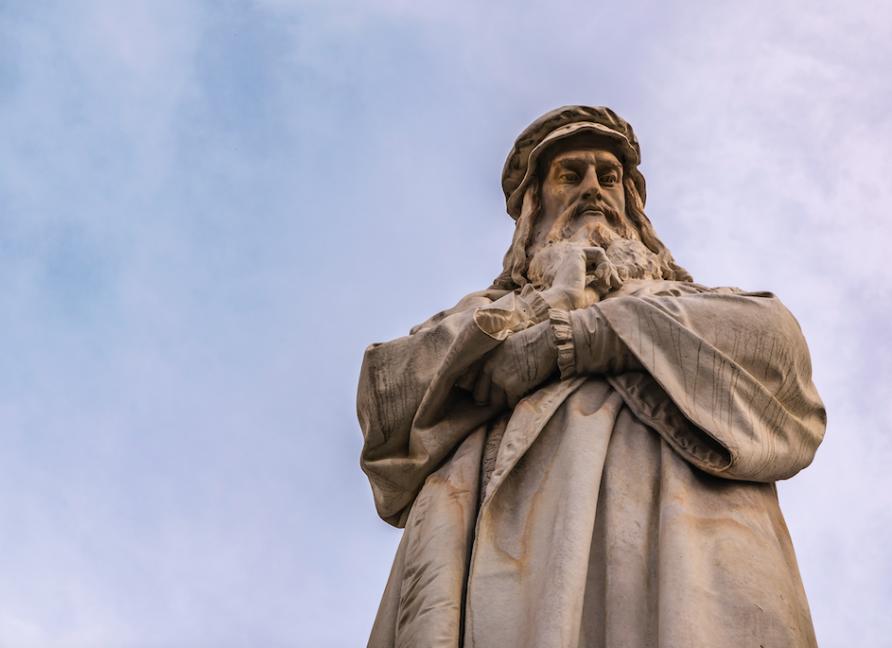
The Museum will re-open on 20 December and among the treasures on display, the prime position will be occupied by one of just four of Leonardo’s painted portraits of women – the portrait of a Lady with an Ermine.
This masterwork was created ten years before Leonardo turned his attention to another enigmatic subject and painted the Mona Lisa.
For the Lady with an Ermine, da Vinci poses her body facing left. Her face and neck are framed by the darkness of the surroundings. She turns her head as if she heard her name being said. She listens without speaking.
A juxtaposing movement captured on canvas – is she smiling?
The snow-white animal in her arms follows her gaze, caressed by her hand. Otherwise known as a stoat or a weasel, an ermine’s coat turns brown in the summer but its winter coat is pure white with a tip of its tail black. For centuries it was the exclusive fur for royal robes of majesty representing ‘moral purity’.
Writing before his death in 1492, the Italian poet, Bernardo Bellioncioni, admired Leonardo da Vinci’s portrait, suggesting that Nature herself was envious at such a faultless depiction of Cecilia – “one of Nature’s stars … whose lovely eyes cast the sun into dim shadow”.
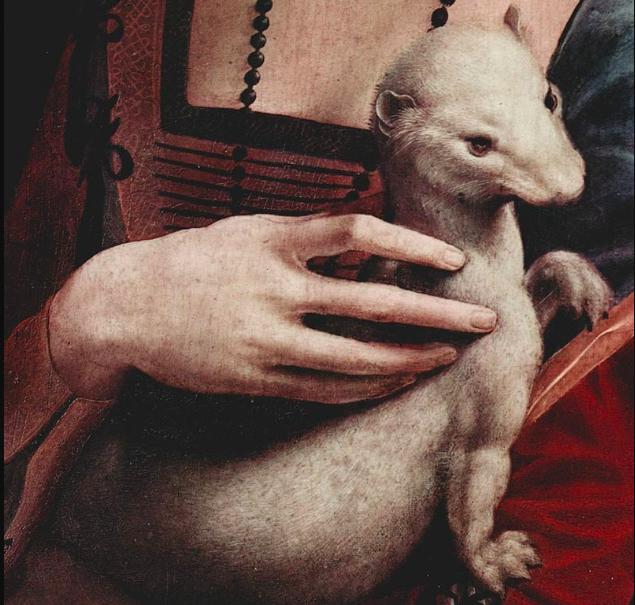
Bellioncioni’s sonnet gives a glimpse of Da Vinci’s contemporaries’ appraisal of his work and is the earliest source of information we have about the portrait of the young woman.
The Cecilia in the portrait and in the poem was the then 16-year-old Cecilia Gallerani, who lived from 1473 to 1536.
She was renowned not only for her beauty, but for her wit, her pursuit of the arts and scholarship.
Leonardo made her a subject of this portrait at request of her lover and his patron Ludovico Sforza. Sforza, nicknamed ‘il Moro’ (or The Moor) became the ruler of Milan following the death of his nephew Gian Galeazzo. It was also Sforza who commissioned Da Vinci to paint The Last Supper.
But the symbolism of Cecilia holding an ermine creates an interpretative mystery characterising all of Leonardo’s works.
Could this be a reference to Ludovico’s membership of the Order of the Ermine and its motto ‘death rather than dishonour’? Could it be a play on words related to Cecilia’s family name in Greek – the Greek word for ermine is galée.
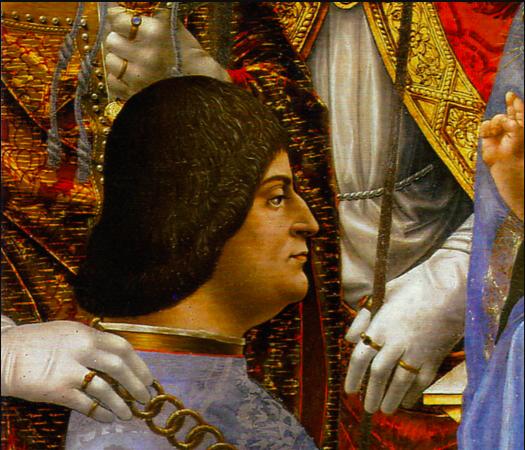
Or did Leonardo place the animal in the portrait to hide Cecilia’s pregnancy?
The pure white ermine itself symbolises restraint, purity or even chastity. Could Leonardo have placed the animal in the arms of Cecilia to remind viewers of her bondage to Ludovico as a concubine?
But the ermine, although stroked by Cecilia, is still a predator with menacing claws and it follows her gaze with watchful eyes.
Bernardo Bellincioni’s death in 1492 gives us a level of certainty that Cecilia did sit for the portrait before that date.
But we can also assume that it happened before she gave birth to Sforza’s son Cesare in 1491.
Within a year, Cecilia had parted ways with Ludovico Sforza after his wife, Beatrice d’Este, demanded her removal from Sforza’s court.
At any rate, Cecilia’s affair with Sforza was well over by 1492 when Cecilia wed Count Ludovico Carminati de Brambilla, with whom she had several children.
The evidence that Cecilia Gallerani’s portrait remained in her possession, presumably until her death, comes from Cecilia’s correspondence with Isabella d’Este – ironically Sforza’s sister in law.
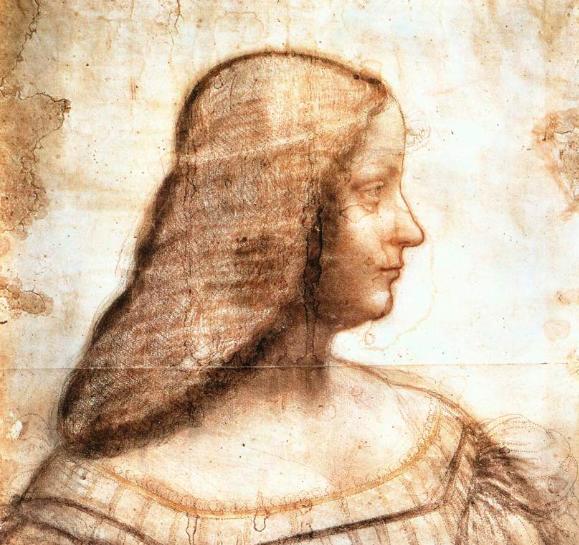
In 1498, Isabella wrote from Mantua to Cecilia asking for the portrait so she could compare it to portraits made by the Italian Renaissance painter Giovanni Bellini, promising that da Vinci’s work will be returned.
Cecilia obliged, writing back to Isabella that there was no painter equal to Leonardo da Vinci.
But after the letters between the two women, the painting disappears. There was no information about the whereabouts of the portrait for centuries, and somewhere in this period Cecilia’s identity was lost.
What is known is that before 1800, the painting was purchased in Italy by a Polish prince, Adam Jerzy Czartoryski for his mother Izabela Czartoryska – a passionate collector.
Even the circumstances of the sale are vague. We really only know that Czartoryski was sure that he had acquired a work by Leonardo da Vinci.
In 1809, Izabela, writing for a museum she had founded, described da Vinci’s work as the portrait of the mistress of the King of France, Francis I, known as ‘La belle ferronnière’. She commented that “the attentions of the King and the brush of Leonardo give the painting its quality”.
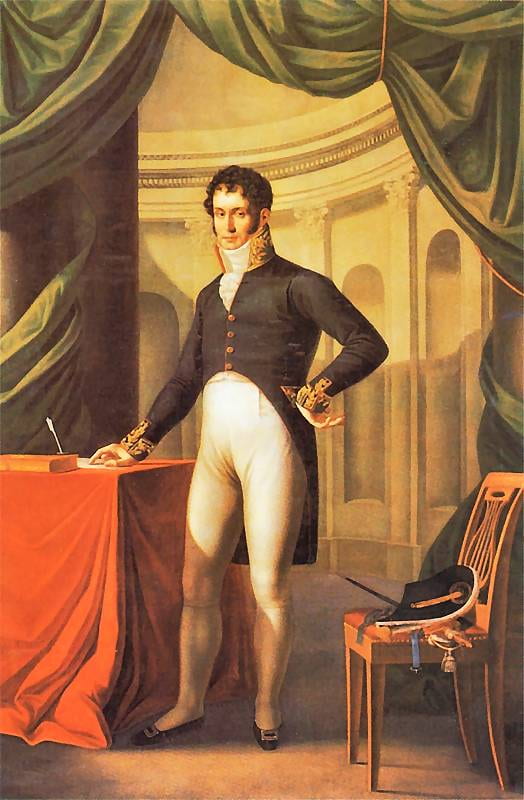
The painting remained in Poland until the 1830s, when Adam Jerzy Czartoryski was forced into exile after leading an uprising against Russia. The portrait then found its new home at the Hôtel Lambert in Paris, the seat of the Czartoryski family in exile.
In the 1870s, the Czartoryski family moved back to Poland, to Kraków, and in 1878 with the opening of the Czartoryski collection – the portrait was exhibited to the public.
But the painting itself didn’t really get much attention until, in 1900, when the debate about the identity of Leonardo’s sitter really began. The original identification of the portrait as La belle ferronnière, depicting another Sforza’s mistress, Lucretia Crivelli, was abandoned.
During World War II, the German forces occupying Poland looted the Czartoryski’s art collection and, for a short time, the portrait was exhibited at the Kaiser-Friedrich Museum in Berlin. It eventually found its way into hands of the German Governor of occupied Poland, Hans Frank.
After the war, the Lady with an Ermine, was returned to the Czartoryski Museum which, by that time, had been incorporated into the National Museum by the Soviet sponsored Communist government.
Then, in 1991, after the fall of the Berlin Wall, the Czartoryski family regained legal rights to their art collection and some of their property.
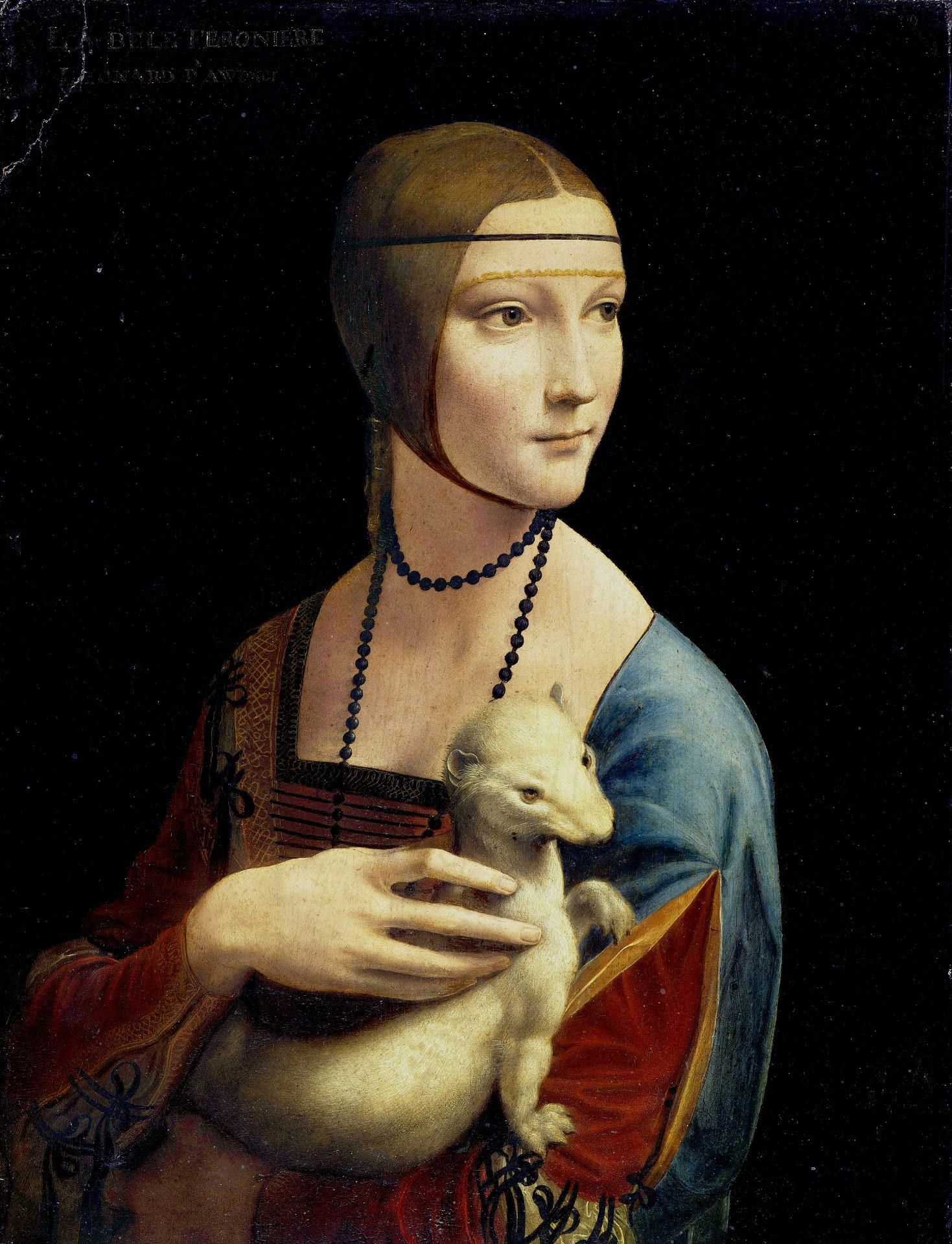
In December 2016, the whole Czartoryski collection, including the portrait of Cecilia Gallerani, was bought by the Polish government for €100m (A$162m).
The sale included more than 80,000 pieces of art, around 250,000 publications and manuscripts, and the rights to the extensive property and landholdings.
And now, the enigmatic Lady with an Ermine is back where she belongs – in the admiring public’s gaze.
The collection of the Czartoryski Museum in Kraków will be again available for public viewing from 20 December 2019. This article was first published on Pursuit. Read the original article.
